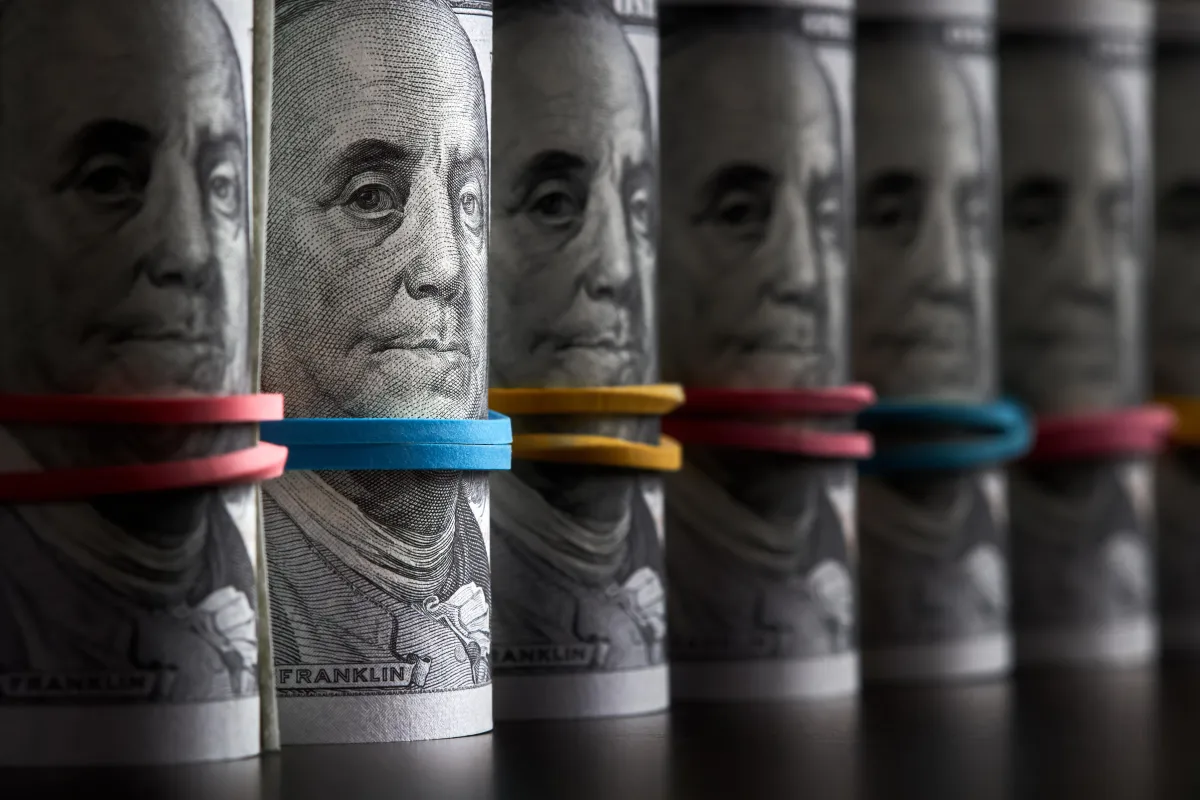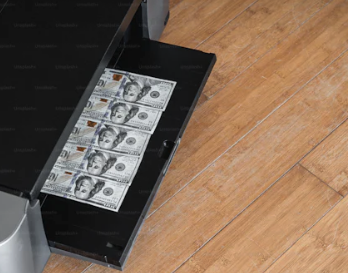
You Finance Everything You Buy

It’s hard to spend time in the infinite banking ecosystem and not hear that phrase on repeat. "The very first principle that must be understood is that you finance everything you buy–you either pay interest to someone else or you give up the interest you could have earned otherwise." A foundational truth put succinctly into words by Nelson Nash in Becoming Your Own Banker, the phrase is simply and fundamentally true yet challenges our deeply engrained consumer financial paradigm.
As consumers, we must play by the bankers’ rules. All we have is our labor, which we convert into Federal Reserve debt notes without any consideration for the macroeconomic implications of participation in a game slanted so heavily in favor of our opponents. Setting aside the fact that we are dealing with a unit of account that, Constitutionally, cannot be considered to be money, we are left to evaluate the merits of two ostensibly contrary options: to finance large purchases through the bankers’ lending mechanisms, or to save and pay cash so as to avoid the payment of interest to a third party to the transaction.
The Small Black Box
“But when I spend cash, I avoid paying interest to anyone, so how can you call that financing?” Insofar as you would not get loan documents and an amortized repayment schedule, you would be correct in that you are not paying interest to an outside entity. Much in the same way that we refer to inflation as a ‘hidden tax,’ when we refer to financing, we are including opportunity cost as a factor in our overall decision matrix. Like inflation, it may not be readily quantifiable on your spreadsheet when weighing future returns, as it necessarily requires estimation and a theoretical counterfactual. This does not make it any less important when making financial decisions that have future implications.

Let’s use an analogy to visualize lost opportunity cost. Imagine that instead of a stack of cash in hand or a number on a screen, you actually had a small black box that printed out a pre-programmed interest rate based on the value of the box itself. If this were a $30,000 box with a 5% programmed interest rate, it would print out $1,500 each year into the hand of whoever had possession of it. If you could avoid paying interest on a $30,000 purchase to an outside entity by instead handing over the box, would you consider that to be a superior financial decision?
Obviously in this hypothetical you are giving away more than just the $30,000 box; you are forever forfeiting the money that the box will be generating. The box will continue to print for somebody, but that someone is no longer you. In fact, in the right hands, such as those who understand cash flow and the velocity of money, the interest rate on the same box might even be dialed up. But even with no action taken, we know it will at least continue to print $1,500 per year for its owner.
This is how we can begin to quantify opportunity cost so that a more precise comparison can be made in our decision to finance or pay cash. Let’s flow that out to a practical application of the fact that you finance everything you buy. With my own policy, I used a $30,000 policy loan to invest in a real estate syndicate which yielded 10% return per year for five years. The interest rate on my policy loan was 5%, so I was capturing a 5% spread on the flow of this money. Yet my dollar-for-dollar return was actually 100%, as every dollar paid in interest to the policy loan generated two dollars from the investment. If I had the opportunity to put more money into that investment under the same terms, then for every dollar that entered my system, I would have to decide whether to put it in the syndicate, invest it elsewhere, save it, or spend it. Narrowing our focus to either spending it or putting it into the syndicate, we can more clearly appreciate that by spending it, I am forfeiting the ability for that dollar to bring a second dollar into my personal economy.
Joe Navy vs. Rave Damsey: A Tale of Two Consumers
We’ll develop the idea one step further to a decision that everyone reading this article has likely had to make: purchasing a vehicle (with a price tag of $30,000 for continuity’s sake). We’ll take two hypothetical consumers and compare their strategy and outcome to prove that both will indeed finance their purchase. We’ll call our first consumer Joe Navy, an homage to the near statistical certainty that a sailor out of boot camp will rush straight to the dealership right outside base and finance a ridiculous car with a high-interest loan. In this case though, he prudently negotiates the salesman down to 5% so as to have more tattoo money leftover. Our second consumer is a frugal saver named Rave Damsey, who recoils at the mere mention of debt and believes himself superior to Joe Navy due to his conviction that he is right no matter how mathematically inaccurate he is. Rave saves up $30,000 as he arrogantly mocks those who would sheepishly hand over their money to banks in the form of interest. He knows he is not paying anyone interest.

Rave walks in with $30,000 and he walks out with a car and no money, smirking as he sees Joe Navy getting worked over in the sales office. Joe, on the other hand, walks in with nothing but a credit score, a vape pen, and a smile; he walks out with a car and a promise to pay back $34,000 over five years. (Compounding period, beginning or end of year compounding, etc can change that total payoff number, I am keeping it simple enough for someone who took a booster for a free donut, so the numbers will be easy to track but perhaps not precisely accurate on an amortization schedule).
Who got ‘fleeced’ in this situation, as Rave likes to say of his borrowing counterparts? Well, what if we made a mental swap and instead imagine they both walk in holding that $30,000 small black box with the dial set to 5%. How do we compare them now? Rave walks out without the box now, which is now permanently out of his personal economy. The dealership grins as they dial up the interest rate and power up the printer. Joe walks out with his box still in hand and drives away to plug it in at home. Both men had the dial set at 5%, and one gave up the box and it's 5%, while the other kept his box but incurred a separate obligation that compounded at 5%. Can Rave truly say he is better of than Joe? What if Joe knew how to dial the rate up to 10%?
In my actual real-life policy loan example, I took my box and set the interest rate at 10%, while the interest I paid the insurer remained at 5%. Had I saved up another $30,000 for a car purchase, could I not optimize by taking a 5% loan from the dealer and putting the money into the 10% real estate syndicate? If I handed over my $30,000 small black box to the dealer to avoid interest payments, what is my opportunity cost? This analogy made a few assumptions that would have to be factored into the decision matrix, namely that both men entered the dealership with an ability to both pay cash or finance, and that both could have earned 5% with that money elsewhere. The point is not to find a foolproof, all-encompassing truth that withstands every hypothetical. Rather, it is to make it clear that there is an opportunity cost that must be considered, and is potentially quantifiable to the degree that other information is known. The wheels of the banking machine turn by lack of understanding of consumers.
Two Sets of Rules
To bring it back to the first point made, bankers and consumers have very different ways of thinking about money. There are two sets of rules when it comes to finance: consumer rules and banker rules. The way you think about the velocity of money and the power of cash flow will indicate which set of rules you allow to govern your personal economy. The problem is that bankers write both sets of rules. Consumers are given a narrow scope and are not taught the implications of cash flow or the velocity of money. That knowledge must be sought out and learned before decisions can be framed appropriately. If we have been gatekept by financial media and highly-paid radio pundits into thinking that spending cash is an interest-free option that is superior to borrowing in all situations, do you think it is likely we have been misled elsewhere?
As Nelson said, “Somehow or another, it never dawns on most financial gurus that you can control the financial environment in which you operate.” And operate in the financial environment you must, so do it with a more complete knowledge of the rules. If the example outlined above made sense, then know that there is a whole world of financial knowledge which has been hidden from us that is yours to be learned. We are deeply immersed in the discovery of such paradigm-altering economic thought innovations, and spend our time seeking out such information for the benefit of our clients. Our mission is to contribute to creating the parallel economy, one free-thinking self-banker at a time. Is it worth your time to consider a reassessment of your prior assumptions about financing?
Schedule a clarity call here or send email us at [email protected]!
